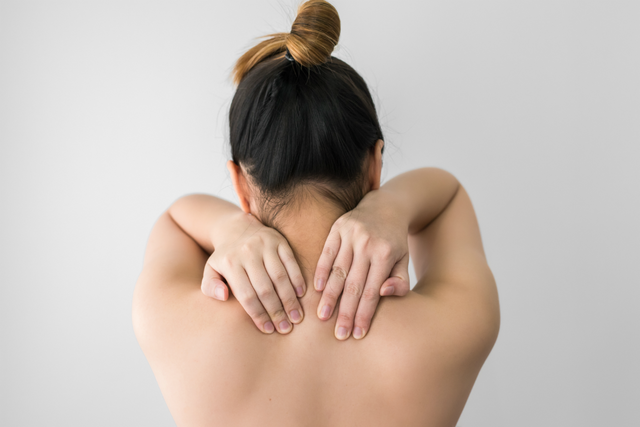Better Sore Than Sorry: 7 Ways to Soothe Sore Muscles

You’ve been there: you signed up for a killer class, knocked it out of the park, and find that you can’t walk up (or down) a flight of stairs the next day. What is happening?! Why do you feel so incapacitated?! How can you make it better?!
Welcome, friends, to DOMS: Delayed Onset Muscle Soreness. DOMS occurs when you ramp up the intensity and duration of a workout where you also use your muscles in a new way. Contrary to popular belief, this pain is not due to lactic acid build-up (that’s a different thing altogether and happens at a different time during a workout). DOMS is unique in that it’s specific to the sensation that comes significantly after a workout: it’s delayed by usually 1-2 days and can last as long as 3-5 days.
Your sore muscles are actually giving you some great information: that tenderness, stiffness, and general soreness means you’ve put them through their paces by asking them to work at a more challenging level than usual. And all this means increased strength and stamina! The great news is that experiencing DOMS means your workout is working.
The theory is that the soreness comes from the creation and healing of microscopic tears in the muscle fiber. Rebuilding muscle, which ultimately makes it stronger and more resilient, creates has an element of pain to it. For this reason, DOMS can affect athletes at any level, from fitness newbies to elite competitors. If you push harder than your muscles are used to being pushed, they can experience DOMS.
The biggest culprits, besides going longer or harder than usual, are lengthening, or eccentric, movements. Think of lowering slowly from a pull-up, standing slowly from a weighted squat, or running downhill. These movements lengthen, rather than shorten, the muscle and can contribute to extra sensation while the fibers rebuild.
Here’s what you need to know to help your poor, sore muscles… until your next tough workout.
Ice
Often, the pain experienced after a workout is caused by inflammation of the muscle, a natural response to the trauma of shredding muscle fiber in our efforts to make it stronger. Icing for 20 minutes followed by 20 minutes of ice off for a couple of hours at a time can make a difference in reducing overall healing time and soreness. While medical professionals don’t recommend applying ice directly to the skin, a cold pack wrapped in a towel or a reusable plastic bag can do wonders.Rest
Go figure: resting your tired muscles can be a great way to help them recover. In fact, ensuring they have that time to rebuild properly can mean better gains overall. If you’re dying for a workout while your legs recover from endless squats, spend some quality time working your upper body and core.Hydration
It’s amazing what a little extra hydration can do for sore muscles. Upping your fluid intake can help speed up the healing process and encourage your body to flush out toxins. Plain filtered water works great (aim for 10 or more eight-ounce glasses per day; as much as up to 20 eight-ounce servings if you’re super active or super sore), and ultra-hydration options like Gatorade or coconut water work great, too. The added electrolytes can be a boost for sore muscles.Bodywork
Modalities like trigger-point acupressure – applying specific, constant pressure to sensitive points in the muscle fiber – as well as massage can help increase blood flow to sore muscles, which promotes healing and reduces pain.Anti-inflammatory foods
Many foods contain compounds that help reduce swelling and promote healing. Turmeric, tart cherry juice, ginger, and cinnamon all contain anti-inflammatory properties. Work these into smoothies or post-workout meals to help tamp down inflammation and encourage your muscles to rebuild sans pain.Stretching
Being gentle with your muscles while they recover can help reduce soreness. Moving through a gentle yoga sequence or using a set of resistance bands to move muscles slowly – promoting elongation as you may have done during your workout, just without the stress – will help move blood and oxygen to your cells and promote healing.Rolling out
We get it: rolling out is sometimes the most painful, least desirable thing to do for achy muscles. But there’s a reason the pros swear by it: breaking up old tissue, encouraging blood flow, and creating different planes of movement over unhappy muscle fiber can help to reduce soreness. Just be gentle and avoid overdoing it: a few good passes over a sore spot will be more beneficial than many minutes over and over, which may further irritate the muscle and delay recovery. You want to nudge your muscle towards recovery rather than force it there; after all, being a little tough on yourself is how you ended up with DOMS in the first place, isn’t it?
One more thing to keep in mind…
We have even better news, and a possible antidote to the psychological takedown that can be a bout of DOMS! By experiencing this sensation in a particular muscle group, you can actually develop a partially protective effect that reduces the chances of developing soreness in that same area for the following weeks or months. So, keep telling yourself that your hard work is paying off… then go drink some coconut water.